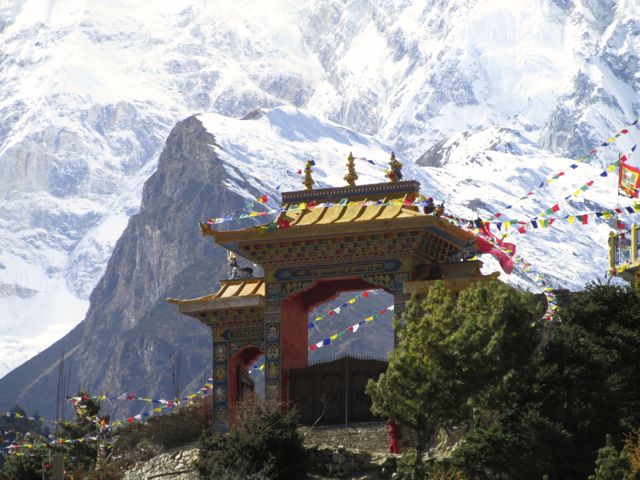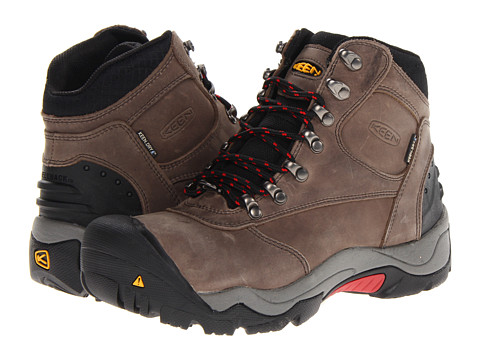Yesterday,
I reviewed the new
Rev 6 backpack from
Osprey, hailing it as the best trail running pack that I had ever used. Today, I've got some thoughts on another revolutionary new product from the same company in the form of the new ultra lightweight Exos 48, a product that is sure to delight the "light and fast" crowd.
The Exos series of packs have been around for some time, and they have always remained highly focused on delivering very light, yet still durable, packs for backpacker who truly watches ever ounce. One of the hallmarks of the Exos packs has always been that they are comfortable to wear, while still maintaining their minimalist approach. With this new design, that level of comfort has increased even further, even as Osprey has managed to cut even more weight. So much so, that this year's model tips the scales at a svelte 2 lbs., 5 oz. (1.05 kg). That's extremely light for a pack this size.
The Exos series is available in three sizes, 38-, 48-, and 58- liters. Personally, I think the 48 is the definite sweet spot for being lightweight, yet still providing plenty of capacity to carry all of your gear. The large, internal chamber offers plenty of room for all the gear you need for a prolonged hike, provided you've already bought into the ultralight mantra. Make no mistake, the Exos packs are probably not the best option for a beginner hiker, but for those with a bit of experience under their belt, they are a very tempting option.
In addition to main storage compartment, the pack also has a removal upper pocket with a zippered compartment. I like this option for storing things that I want to keep close at hand, such as a headlamp or small medical kit. The hipbelt also has an integrated pocket on both sides, with are large enough to hold a small point and shoot camera or some snacks for the trail. These pockets have become indispensable to me over the years, and it baffles me when manufacturers don't include them these days. A large, external mesh pocket on the front is a great place to store an extra pair of shoes, or wet items that you don't want inside the pack as well.
Speaking of the hipbelt, it is surprisingly thick and well padded for an ultralight pack. Once adjusted properly, it rode exactly where it should, transferring the weight to my hips, and keeping the load well balanced for long hikes. Likewise, the shoulder straps are thick and comfortable as well, helping to maintain the overall level of quality across the entire design.
Ultralight backpackers will like the fact that Osprey has designed parts of the Exos to be easily removed. In addition to the top floating lid of the pack, there are removable compression straps and sleeping pad straps for those who really are looking to shave ounces. Those who do remove the lid will be happy to see an integrated FlapJacket to help keep the weather out of the interior of the pack.
As much as I really like the Exos 48, I have to say that I'm not sure I'd want to load it up with too much weight. While it is comfortable to wear, I feel that if you push it to its 48 liter capacity, it may start to show the strains of being such a lightweight pack. While some may find it carries that load just fine, I'd recommend being careful with pushing it too close to that limit. It feels like a safer option carrying 40-45 liters of gear, rather than stuffing it full.
That said, the pack is very easy to wear on extended hikes. It is comfortable, provided you recognize its limitations and don't push the weight too high. The new "Exoform" harness system is mostly to thank here, with those well padded shoulder straps and hipbelt aiding int he level of comfort.
I have been a fan of Osprey's airspeed suspension systes for some time, and it is a welcome addition on this pack as well. The suspension helps keep the pack off your back, which greatly adds in ventilation. There is no way to keep you perfectly cool and dry while wearing a backpack, but this design certainly helps some.
Of course, the pack is also hydration ready, and capable of carrying a 3-liter bladder. Sadly one isn't included with the Exos. On the one hand, this does allow you to choose the bladder you want to use, which is particularly handy for those of us who already own several. But Osprey makes some excellent reservoirs, and the inclusion of one here would have been icing on the cake, albeit at the expense of ounces.
The Exos series of packs are already a favorite with those hiking the Appalachian and Pacific Crest Trails. My feeling is that this new version will only increase their popularity further. If you're looking for a lightweight pack that can meet all your ultralight needs, Osprey has delivered once again. With a price tag of $190, this pack delivers on the promise of comfort and performance, at an extremely low weight. Provided you know what you are getting when you buy in, I think you'll be more than happy with Osprey's latest masterpiece.














